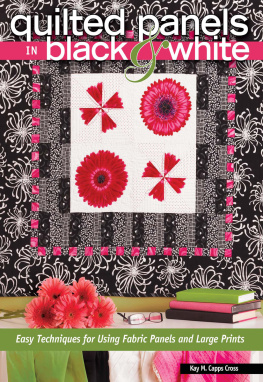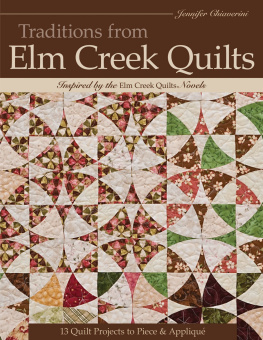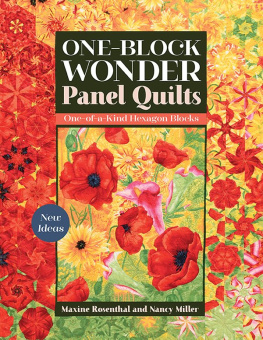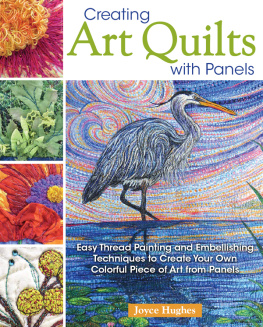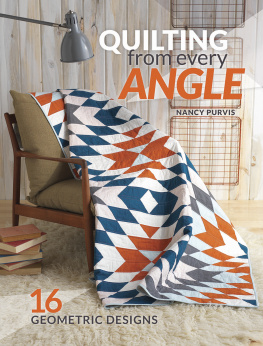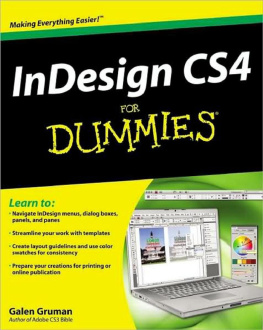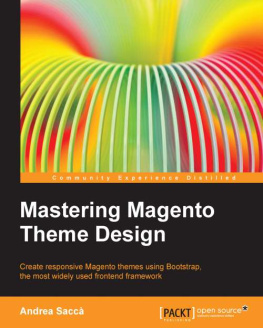Contents
Guide

Publisher: Amy Barrett-Daffin
Creative Director: Gailen Runge
Senior Editor: Roxane Cerda
Editor: Liz Aneloski
Technical Editor: Helen Frost
Cover/Book Designer: April Mostek
Production Coordinator: Tim Manibusan
Illustrator: Mary E. Flynn
Photography Assistant: Gabriel Martinez
Photography by Lauren Herberg, unless otherwise noted
Published by C&T Publishing, Inc., P.O. Box 1456, Lafayette, CA 94549
Dedication
For the many quilters who have participated in my workshops and asked endless questions about working with panelsthis book would not exist without your curiosity and your support! And to my dear friend, Alex Anderson, for encouraging me to follow this theme and develop my unique approach to working with panels. Thank you for always encouraging me!
Acknowledgments
There are so many great panels available these days, and throughout the book, you will note a wide variety of fabric manufacturers represented. I use June Tailor 12 12 graph paper to map my projects. My go-to supplies include Aurifil 50/2 thread for piecing, Quilters Dream battings, Signature 40-weight cotton quilting thread for the quilting. All of my quilts are designed, constructed, and quilted by me. I enjoy the entire process from start to finish.
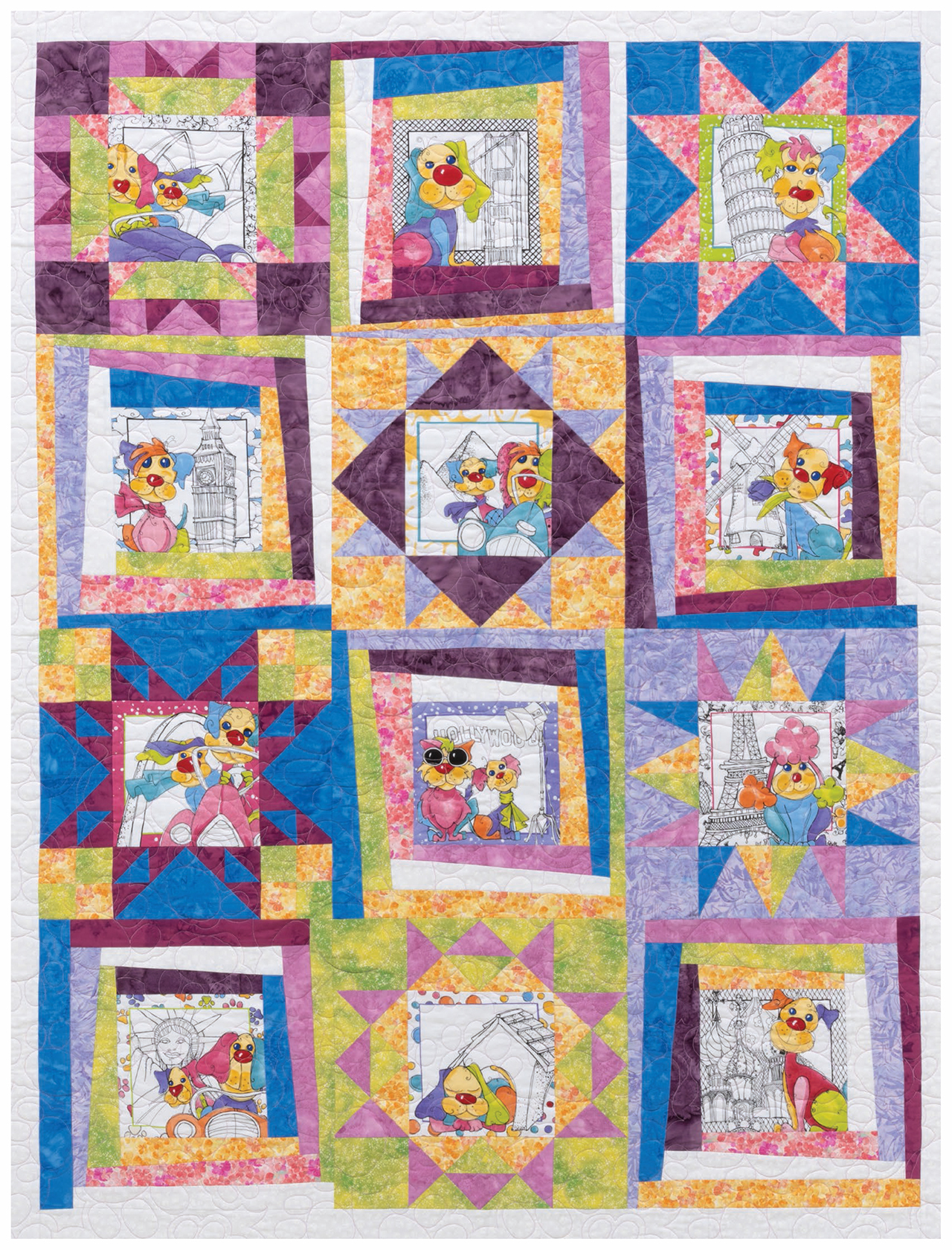
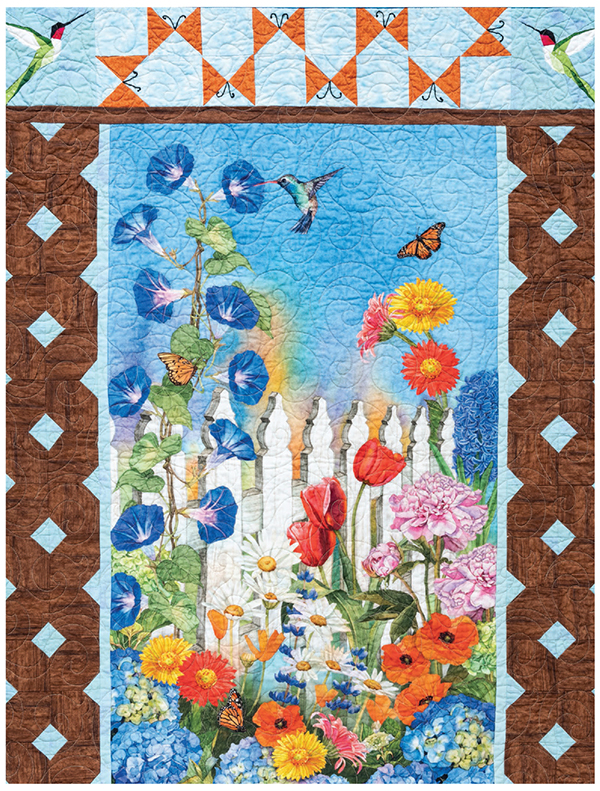
Introduction
Pre-printed panels! We love them, we buy them, and then what? Take a good look at your fabric stash and chances are that there are at least one or two of these promising gems hiding somewhere in those stacks!
The beauty of panels is the color, the design, and yes, even the possibilities. But, where do we begin? We often get home with our newly purchased panel and all the coordinating fabrics and thats the last we see of themanother purchase lost in the caverns of our stash. Because so many of my students have come to me with these very questions, I began to explore and play in an attempt to come up with some creative solutions.
Im here to encourage you to dig those panels and fabrics out of the closet, grab some colored pencils, some scratch paper, some graph paper, and settle in for inspiration and fun!
We will walk through the steps of how to work with a variety of panels to create one-of-a-kind quilts and other special projects. You dont need a patternyoull learn how to create your own! But, having some basic skills is a must when working with panels.


Chapter 1
Discover the Different Types of Panels
Go take a lookhow many panels have you collected and rediscovered in that fabric stash of yours? Grab one and lets get creative!
Types of Panels
Panels fall into one of 3 categories. Youll discover that all 3 styles offer endless opportunities to design unique projects.
SOLO PANELS
There are the big solo panelsone big picture if you will. These make fascinating central designs in medallion style quilts! Check out Hummingbird Garden in the Gallery of Quilts.
I prefer to treat these as central medallions and create a series of borders around them, much like a traditional medallion quilt, but I dont mean simple, plain, fabric borders. Find design ideas within the panel and use them as inspiration to design your borders.
The beautiful solo panels can inspire you to create a series of theme borders that highlight some of the motifs from within the panel itself. In the panel at right, some themes that jump out immediately are piano keys (look at all those stripes in the sweaters!), hearts, snowflakes, and triangles (also in the patterns of the sweaters). Look for patterns or quilt block units and create borders highlighting what you see.

Arctic Wonderland by Hello Angel for Wilmington Prints

Family!, 40 49, by the author, 2021
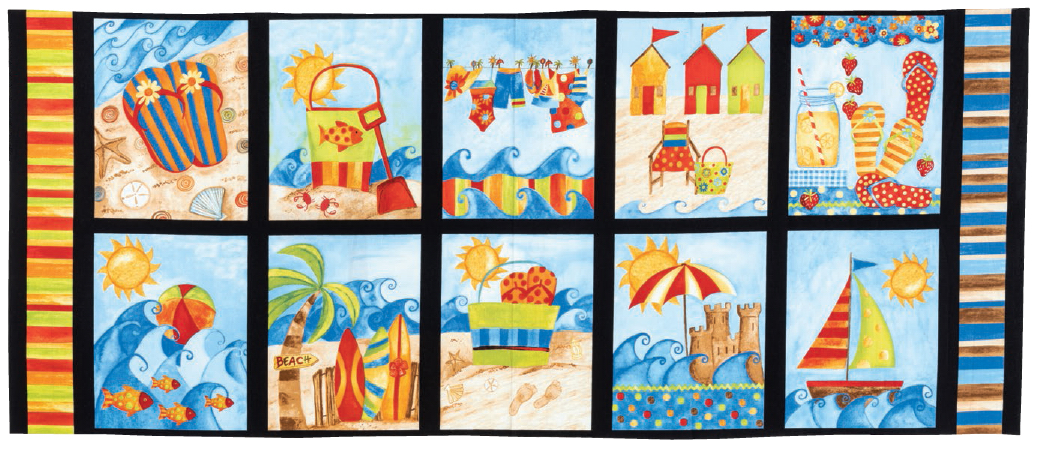
Shore Thing by Blank Quilting.; see the completed quilt.
PANELS WITH MULTIPLE SIMILAR-SIZED FRAMES
This next group usually has a variety of scenesmaybe there are 12 different kittens or zoo animals on the panel.
These panels offer great options for creating a variety of projects. Remember that just because its fabric and its a pre-printed panel with a variety of coordinating fabrics, does not mean the end result has to be a quilt. Your panel may lend itself well to creating Halloween goodie bags for your grandchildren to carry while trick or treating, or holiday placemats for a family gathering, or tote bags for your sewing friends. You might try designing a row-by-row quilt using this type of panel. Step out of your box and dive into the deep end with me!
PANELS WITH MULTIPLE FRAMES IN A VARIETY OF SIZES
Finally, my favorite category of panels is the one with multiple frames, lots of scenes, and a wide variety of sizes. I love these panels because they offer me the greatest opportunity for variety within my designs, but each style has unique challenges.
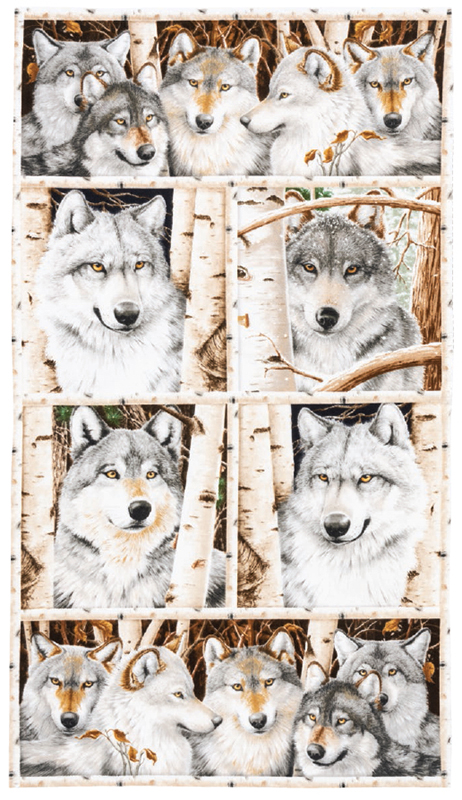
Call of the Wild #F20925 by Kathy Goff for Northcott
COMPANION PANELS
Just when we think weve got this concept of working with panels figured out, along comes something new and the possibilities expand even further! Now there are companion panels!
What are companion panels? There may be 2 solo or multi-frame panels with the same theme that work together, or there may be a solo panel that has a companion panel with multiple images or frames.
If you find a set of companion panels, dive in and really let your imagination go wild!
Take a look at these whimsical 2-panel quilts, All You Need is Love and a Dog and Let It Snow.

All You Need is Love and a Dog #9051P, 24 Dog Block by Beth Logan for Henry Glass
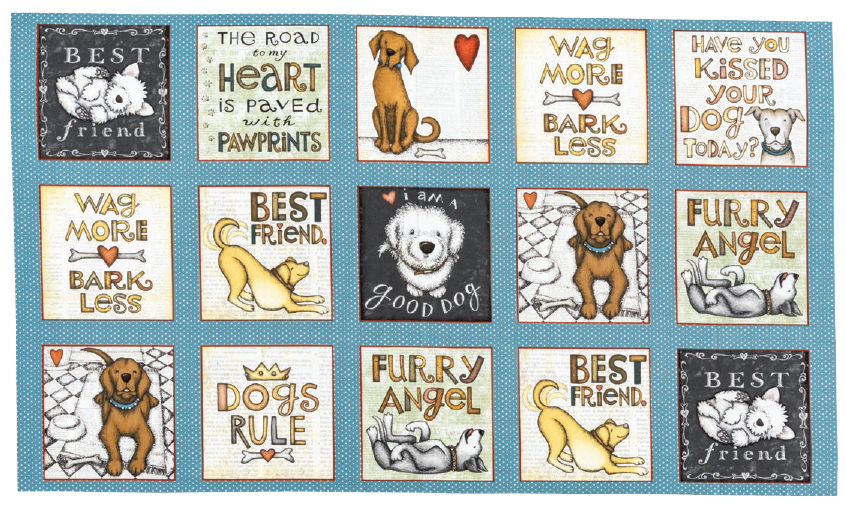
All You Need is Love and a Dog #9048, 23 Panel by Beth Logan for Henry Glass

All You Need is Love and a Dog, 43 64, by Inge Ford, 2021


